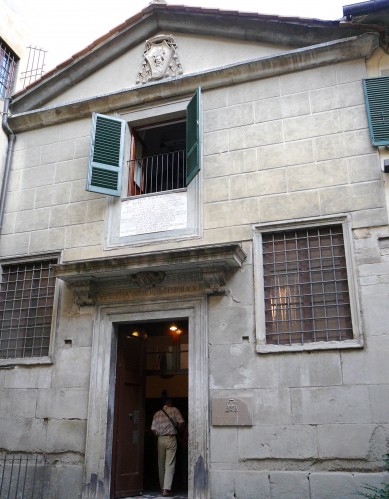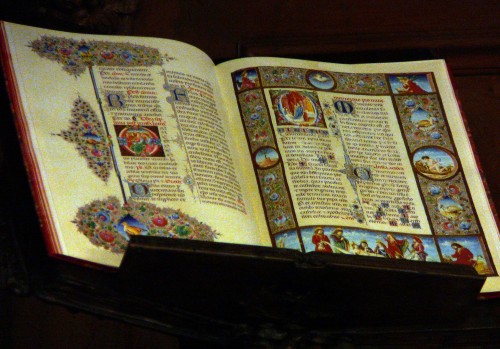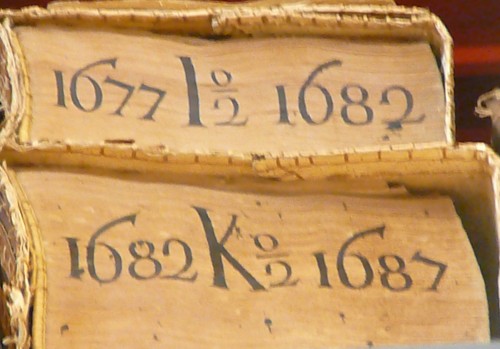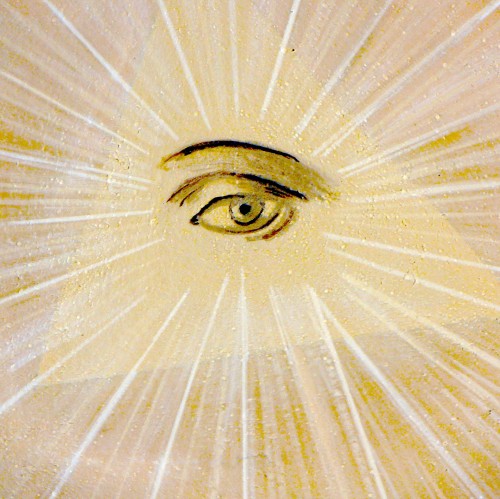Through a small ally the grand Piazza del Duomo, about half way along the south side of the cathedral, there is a little square, Piazza del Capitolo, at one time known as Corte dei Visdomini for the noble family whose tower still stands near by. The Capitolo was (and is today) the Chapter of the Florence Duomo and has governed the actions of the priests, canons, provosts and other dignitaries of the cathedral and its predecessor church, Santa Reparata, since the before the 8th century. Some say the Chapter goes back to Bishop Saint Zanobius in the 5th century.

In the tiny square there was an ancient parish church called San Piero Ciel D’oro, dating from the 8th century – long before the cathedral was conceived. After the building of the Duomo, the parish church was turned into a place of study. It was by decree of Pope Nicholas V (15th century) that Archbishop Saint Antonius Pierozzi created one of the first “public” libraries in Florence and placed it under the control of the Cathedral Chapter.

“This house of wisdom” as it is called in a Latin inscription over the doorway was used for meetings of the Cathedral Chapter and served as the Chapter’s archive. Documents show that the Chapter was very active in city government and in the powerful artistic and business guilds that virtually controlled Florence throughout the Renaissance.

The hegemony exercised by the Florentine upper classes on canonical appointments is clear in the frequent recurrence of noble family names such as Medici, Strozzi, Corsini and Albizi. Giovanni de’Medici (later Pope Leo X), was a member of the Cathedral Chapter.
A plaque in Latin, higher on the façade, recalls the visit to the Cathedral Chapter of Pope Pius VII, on June 1st 1815, on his way to Genoa to negotiate peace in Italy.
Today, the library contains 5, 500 books printed after 1500 and 85 manuscripts from earlier centuries. Most of the original books and documents have since been relocated. The library books first went to the Opera del Duomo and then, in 1778, the collection of many of the early manuscripts were transferred to the Laurentian Library and the printed volumes (post 1500) went to the Magliabechiana Library (now the National Library).

The library is used for research on religious and historical subjects. Letters of request and reference must be presented to use the facility.

But for the lucky few who are granted access, they will sit under a frescoed sky, watched by the all-seeing Eye of Providence.
